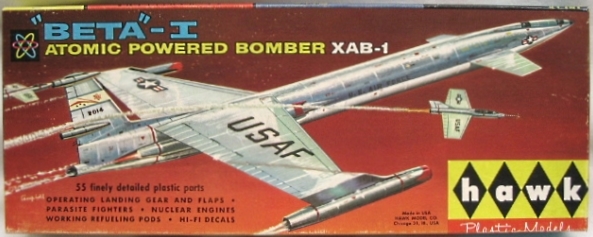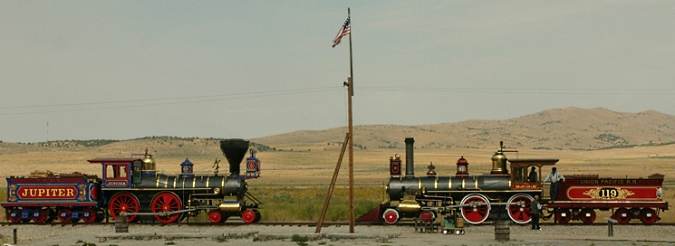By Fred Boucher
with kit history by Alan Bussie
Introduction
In the salad days of the early atomic and jet ages, Cold War fears pushed the envelope of aerospace design and an atomic powered strategic bomber was seriously considered. Convair, Lockheed and Northrop (perhaps others) submitted proposals for such a plane and reactor-fuel concept engines were built. And if a nuclear powered jet bomber isn’t growling-Geiger counter-cool enough for you, consider the zany nuclear powered Mach III SLAM (Supersonic Low-Altitude Missile) of Project Pluto† streaking just above the tree tops, spewing radioactive particles in its wake and lobbing H-bombs. Brigadier General Jack D. Ripper’s dream come true!





SLAM (Project Pluto), three popular Atomic Bomber concepts and the nuclear turbojet engine (click any to enlarge)
USAF was not the only air force to explore an aerial nuke plant- the Soviets did, too. And Hawk was not the only model company to kit a fanciful model of that radiant subject. Aurora kited the Russian Nuclear Powered Bomber shown below and also reviewed on this website.


The original magazine article and the resulting Aurora Kit (click any to enlarge)
Your humble reviewer built this marvellous model aeons ago – I still have the parasite fighters from it! It was, in the lexicon of the era, one cool kit!
“hawk” or “Hawk”?
OK, was it hawk or Hawk? Their logo was ‘always’ spelled in lowercase. Yet the company name as printed on the instruction sheet is capitalized. While I personally want to use hawk, henceforth I will punctuate it as a proper name: “Hawk.”
Kit History
Hawk, like Aurora, liked to be first to put new concepts into a kit. Combining Atomic Power and the parasite fighters, Hawk issued this kit in 1959, shortly after conceptual drawings of Nuclear Powered Bombers appeared in popular magazines. The first issue was in a sturdy hardbox (a thick cardboard upper box lid and tray, with the top covered with a lithographed paper ‘slick) and was given part number 514-98. This exact artwork layout was used in the second issue (roughly 1961) with no changes other than the part number. It was changed to 514-100.

#514-98
Continue reading “Hawk Beta One Atomic Bomber XAB-1 Kit Review”














